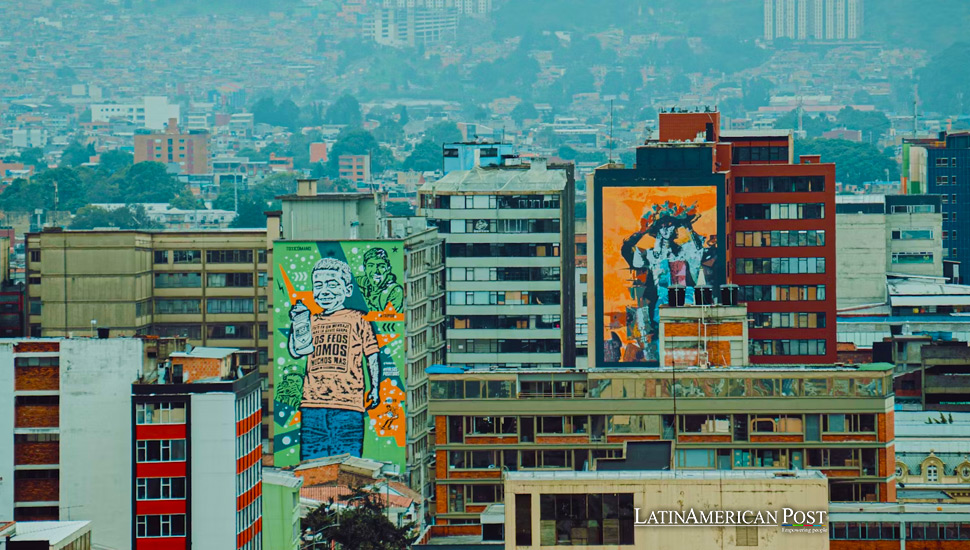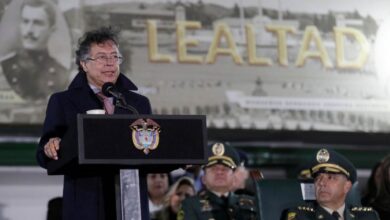Colombia’s Street Art and the Transformation of Public Spaces

In the vibrant streets of Bogotá and Medellín, street art transcends mere aesthetics, embodying a powerful medium of social commentary and cultural expression. This feature delves into how Colombia’s urban canvases narrate stories of resilience, protest, and identity, transforming public spaces into forums of collective dialogue.
Beyond vibrant hues and captivating visuals, street art in Colombia pulsates with a life of its own. It is not merely colorful decor adorning city walls but a powerful form of public discourse, echoing the voices of communities and sparking conversations on critical issues. From the bustling streets of Bogotá to the transformed landscapes of Medellín, Colombia’s urban spaces have become canvases for artistic expression, serving as testaments to the nation’s unique history, resilience, and cultural vibrancy.
Colombia’s street art scene has evolved from its modest beginnings in the 1970s. Rooted in the countercultural movement of the time, early expressions took the form of simple slogans and stencils, often voicing dissent against political and social injustices. The 1980s witnessed a surge in graffiti, with artists like “Aldeano” and “Toxicómano” using public spaces to challenge the status quo and address issues of social inequality. Colombian street art matured as the decades progressed, embracing diverse styles and techniques and transforming from a form of protest into a sophisticated artistic movement.
The Art and Artists
Colombia’s vibrant street art scene boasts diverse, talented artists, each adding a unique voice to the narrative. One such prominent figure is Stinkfish, whose large-scale portraits and vibrant narratives often address social injustice and environmental degradation themes. “My art speaks for the voiceless,” he asserts, highlighting the power of street art to raise awareness and spark dialogue on critical issues.
Another notable artist, Guache, utilizes his signature “indigenous pop” style to reclaim the term “guache” and celebrate Colombia’s rich indigenous heritage. His vibrant murals, often featuring bold colors and stylized figures, are a powerful reminder of the importance of cultural preservation and appreciation for diversity.
The diversity of styles extends beyond individual artists, encompassing everything from photorealism and abstract expressionism to intricate stencil work and thought-provoking installations. This artistic tapestry reflects the multifaceted nature of Colombian society and the various narratives embedded within its street art movement.
Social Commentary and Cultural Expression
Colombian street art thrives on aesthetics and its ability to serve as a platform for social commentary. Artists like Toxicómano and Lugar a Dudas utilize their murals to address issues of violence, displacement, and the legacy of Colombia’s armed conflict. These powerful artworks serve as public memorials to the victims of violence while simultaneously challenging societal norms and prompting critical reflection on the nation’s past and present.
Beyond addressing specific issues, street art also functions as a potent medium for cultural expression. Artists like Démosthenes and Natalia Restrepo draw inspiration from Colombia’s rich cultural heritage, incorporating indigenous symbols, traditional motifs, and vibrant colors. These artistic expressions showcase the nation’s cultural diversity and foster a sense of collective identity and belonging amongst communities.
In recent years, street art has emerged as a powerful tool for urban regeneration in Colombia. Cities like Medellín, once notorious for gang violence and drug trafficking, have witnessed a remarkable transformation through vibrant street art initiatives. Projects like “Comuna 13: Graffiti Tour” have transformed once-secluded neighborhoods into open-air museums, attracting tourists, fostering economic opportunities, and creating a sense of pride within local communities.
This transformation highlights the potential of street art to revitalize public spaces, fostering a sense of ownership and engagement among residents. Through collaborative efforts between artists, local communities, and governments, street art beautifies urban landscapes and promotes social cohesion and economic revitalization.
Challenges and Controversies
Despite its undeniable impact, street art in Colombia faces several challenges. Legal issues surrounding the definition of vandalism and the need for permits can hinder artistic expression. Additionally, concerns regarding censorship and the risk of commercialization pose potential threats to the movement’s authenticity and social commentary.
Furthermore, street art, by its very nature, occupies a contested space, sometimes blurring the lines between artistic expression and public nuisance. Conflicts can arise when specific population segments deem murals inappropriate or offensive, highlighting the need for open dialogue and community engagement during the creative process.
Colombia’s vibrant street art scene is further nurtured by numerous festivals and events held throughout the year. The Medellín Graffiti Festival, for instance, is a renowned gathering that attracts international artists, fostering collaboration and showcasing the best Colombian street art to a global audience. These events not only celebrate the creativity and artistry of Colombian street artists but also provide valuable platforms for cultural exchange and international exposure. By showcasing their work on a global stage, Colombian artists connect with audiences worldwide, forging a deeper understanding of Colombia’s unique cultural tapestry and its artistic expressions.
The Future of Street Art in Colombia
Looking ahead, the future of Colombian street art appears promising. The growing recognition of its artistic merit and its potential for social commentary and urban regeneration positions it as a significant force in shaping the nation’s cultural landscape.
Several trends are likely to influence the future of this art form. The increasing use of social media platforms and virtual tours could lead to broader accessibility and global engagement with Colombian street art. Additionally, integrating technology with artistic expression through interactive installations or augmented reality experiences could further push the boundaries of creativity and audience interaction.
However, challenges remain. Balancing artistic freedom with legal restrictions, addressing concerns about commercialization and gentrification, and ensuring community involvement in creating and preserving public art will be crucial for the sustainable growth of Colombia’s vibrant street art scene.
Street art in Colombia has transcended its origins as mere decoration, evolving into a powerful language of social commentary, cultural expression, and urban regeneration. These vibrant murals pulsate with the stories of a nation, echoing the voices of communities, sparking critical conversations, and transforming public spaces into forums for collective dialogue. As the movement continues to evolve, one thing remains constant: the transformative power of Colombian street art, not only as a captivating form of artistic expression but also as a potent force shaping a nation’s cultural identity and social fabric.
Also read: Panama’s Indigenous Mola Art Saves Cultural Identity
By acknowledging the significance of street art, fostering its growth, and ensuring its responsible integration into public spaces, Colombia can continue to harness the power of this unique artistic movement to enrich its cultural landscape, empower communities, and inspire the world.





